The Hermès atelier is a brand that undoubtedly has a rich tradition in its manufacturing techniques. This fashion house has evolved over the years from its beginnings in 1837 as a workshop for equestrian accessories, to the giant of style and luxury that it is today.
It is evident that Hermès owes its success to a tradition rooted from its early years, a heritage that has been perpetuated through the ages and that continues to stand tall as a personal hallmark of the atelier. It is about his predilection for the manual work of craftsmen, artisans who dedicate their time and experience to making unique pieces.
Have you ever wondered how your Hermès bag was made? Which processes led to the result that you have in your hands today? We give you a hint, it does not involve heavy machinery or mass manufacturing, it is a totally individual work carried out by the hands of experts.
Do you want to know Hermès‘ centennial techniques? Keep reading and find out!
- Leather work
- Saddle stitching method
- Seam sealing
- Handle making
- Hardware application
- Final inspection
Leather work
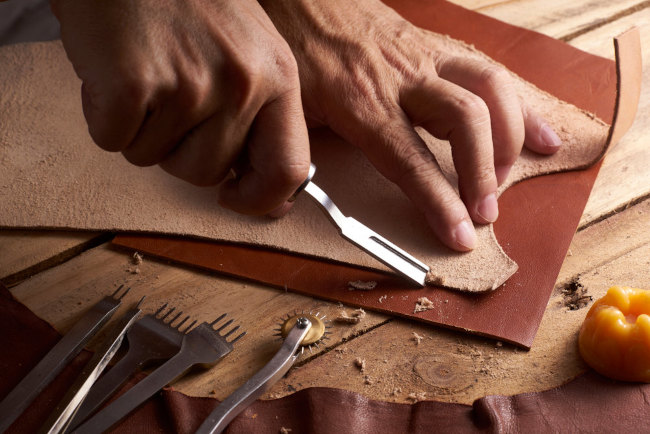
Much of the success of Hermès is due to the undoubted quality of its materials, especially the different skins that they use to make their bags. The workshop has reliable and high-quality suppliers that offer different types of skin, from calfskin and goatskin, to crocodile, alligator, lizard and ostrich.
The first step before making an Hermès bag is the leather inspection process, and the preparation of the skin to begin assembling the delicate pieces from the patterns. This step can take up to two hours, as it takes a lot of meticulousness to do.
For this, the craftsmen obtain the previously processed skins and begin the inspection task taking into account any imperfection, bite or own mark of the animal, these details are highlighted with a marker for later elimination.
It should be noted that a bag is entirely made of a continuous piece, so the material should always be perfect in order to create a flawless handbag.
Once the skin is clean and in perfect condition, the craftsmen begin to cut it into different pieces according to the patterns to make the bag. Each piece is prepared and dyed separately to begin the famous saddle stitching method.
Saddle stitching method
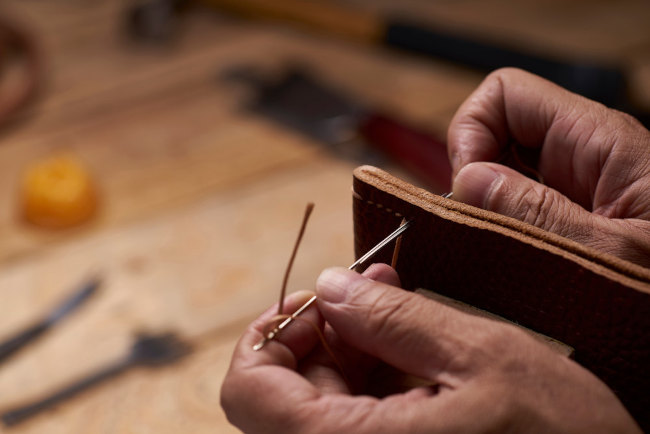
To carry out this centennial technique, it is necessary to use a resistant linen thread, which is threaded in a particular way on two needles, not only passing through the holes but wrapping itself several times on the body of the needles, this creates a resistant knot that provides sturdiness to the stitches. This method is often called saddle stitching method or sellier.
This type of stitching is characterized by its precise diagonal seams, this implies that if one of the seams frays with the use of the accessory, the others will remain firm and will not easily come out of position. For this reason, Hermès relies only on expert craftsmen and carefully trains them for six years to learn the traditional method.
Before starting to sew, the craftsmen use a special pointed tool to mark the points through which the needles will pass, so it is much easier for them to go through the leather when sewing. Then both needles are inserted on each side, the stitches are made and the thread is pulled in opposite directions, creating the attractive Hermès diagonal stitching.
The thread used to sew Hermès bags is waterproof linen, this is achieved through the application of a layer of beeswax on the surface of the linen. This also prevents the material from rotting or wearing away.
During the sewing process, the craftsman has a special flat wooden press that holds the material together as each stitch is made. This flat press is tailor-made for each craftsman, so they are comfortable in position for several hours of sewing.
Seam sealing
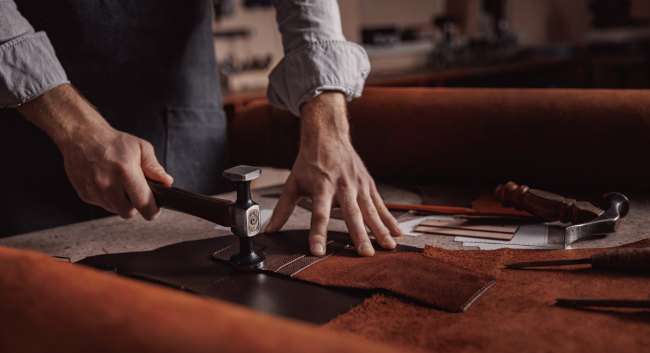
Quality control is very important for the Hermès atelier, for that reason its craftsmen strive to create a uniform effect in each of the bags, this is carried out after the sewing process, where the artisan takes a special hammer and carefully hit all areas of the seams, in order to even out the finish.
This technique also uses a small tool with which the contours of the seams are scraped, to later sand them and apply another layer of beeswax.
All this finally seals the seams and makes them more resistant, in addition to providing a uniform and perfect effect to the overall image of the bag.
Handle making
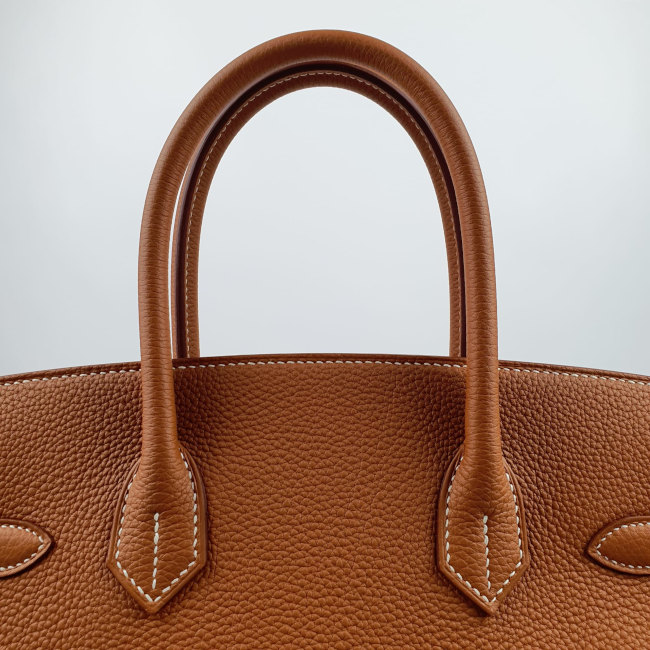
In the case of Birkin and Kelly bags, Hermès implements the creation of handles for the design of these accessories. Crafting the handles requires at least three hours of making by expert craftsmen, and depending on the model, it is necessary to use several pieces of leather to make the handle.
The handles of the Birkin bag are much thinner than those of the Kelly, so four strips of leather are used to create them. The technique used by the craftsmen involves the use of their own thighs as a base to shape the handles of the bag.
The artisans take the pieces and precisely align them one on top of the other, then begin sewing them with the saddle technique. It is necessary that the pieces do not move during the stitching process.
In the case of the Kelly bag, the handle is known for being thicker and stronger than the Birkin handles, so at least six different pieces of leather are applied to add enough strength and thickness.
Hardware application
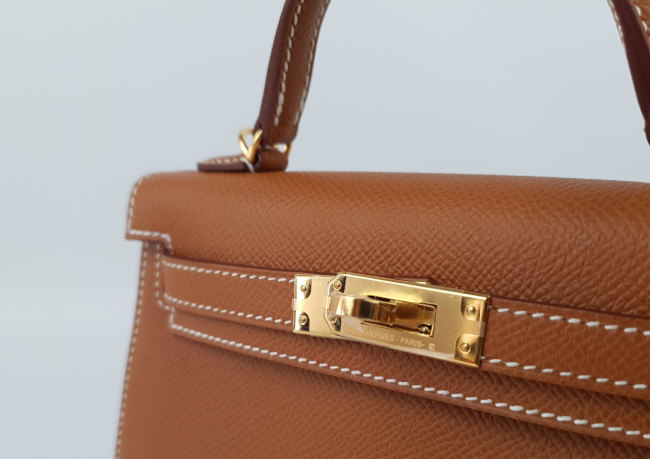
This technique is perhaps one of the most important in the process of creating a Hermès bag, and it consists of the embedding of the hardware in the brand’s bags.
To begin with this process, the craftsmen get the metal pieces that are made of brass (an alloy of zinc and copper) that has been previously plated with gold, palladium, ruthenium or any other precious metal.
To incorporate them into the bag, the artisans have several specialized tools. To start the process, small holes are opened in the skin through which the metal will be introduced, then it is struck with a pressure hammer so that the metal is fixed in the material. The bottom feet or clou are also hammered in and not screwed, so they don’t move easily.
This technique is applied to all the hardware of the bag: the external clasp, the base feet, the metal parts of the clasp strap, and even the metal rings of the Kelly bag handle. This is an indisputable precision technique!
Finally, a very important process is carried out on some of the bag’s studs, the technique is called pearling or perlage, and it consist of giving the studs a completely rounded shape, resembling a pearl. The artisans use a hammer and a chisel with a rounded concave tip to create this effect. To make the perlage, the craftsmen strike while executing a circular motion with the chisel, resulting in a pearl finish on the metal studs.
Final inspection
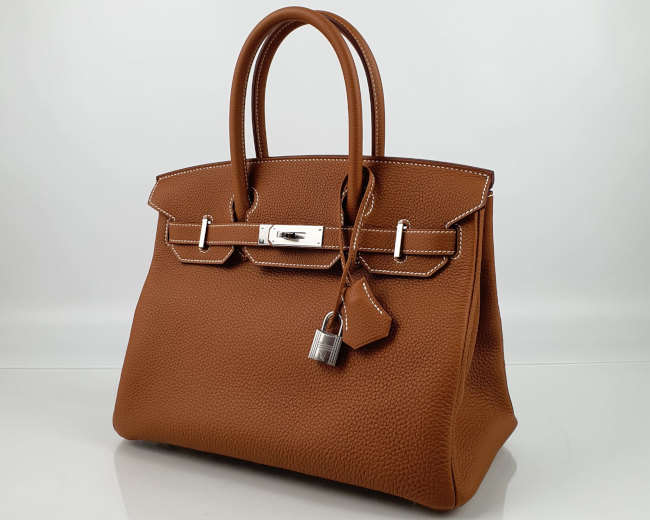
Once the craftsman completes the creation of the Hermès bag, the accessory awaits at least three rigorous inspections before it can reach the fashion house stores. It is a very meticulous process!
The first inspection is carried out in the workshop and is conducted by an expert inspector, who makes sure that every detail of the bag reaches the high standards of the Hermès brand, if it meets all the requirements, they apply the date stamp with the year of creation.
The second inspection is made in the logistics department in the municipality of Bobigny in France. This exploration is much more detailed and strict, if the bag manages to pass the highest Hermès quality standards, then the last print that identifies it as the creation of the brand is added. Finally, the bag is introduced in the dust bag and the orange box, to be sent to Hermès stores.
It should be noted that if a bag does not meet Hermès standards, the atelier is responsible for destroying it and disposing of it properly. This measure is taken to prevent bags from being resold or reaching other markets by malicious people.
What did you think of the Hermès bags manufacturing process? It is something completely incredible! Right?
Now that you know where your precious Hermès bag comes from, you will surely be able to give it much more value and treasure it as you should, as it is a luxury accessory and a true work of art.
If you have thought about expanding your collection of Hermès bags, we invite you to enter our online store, where you will find a wide selection of brand new in box Hermès bags at the best prices in the resale market.
Don’t hesitate and buy your new Hermès handbag with us at The Birkin’s & Kelly’s House!
You may be interested in the following post: Hermès: The value of artisan tradition